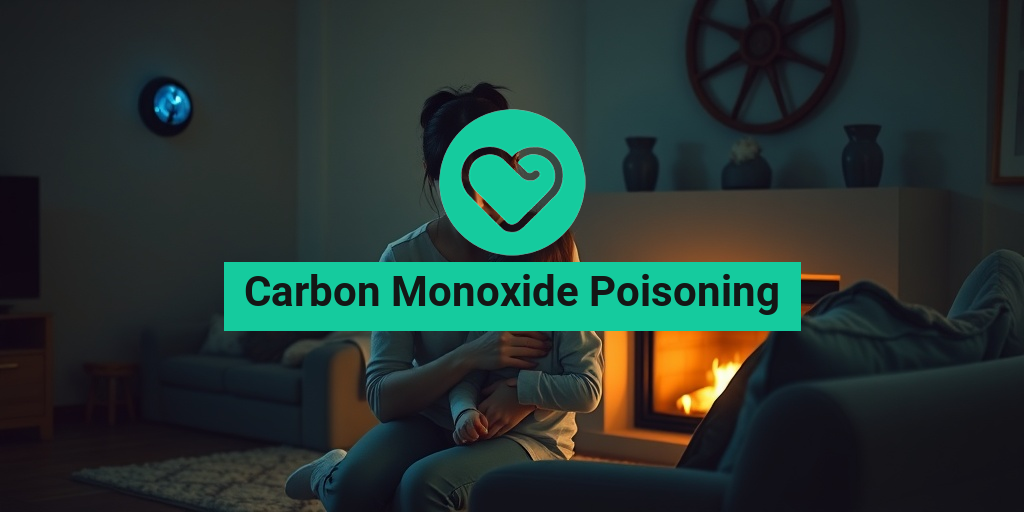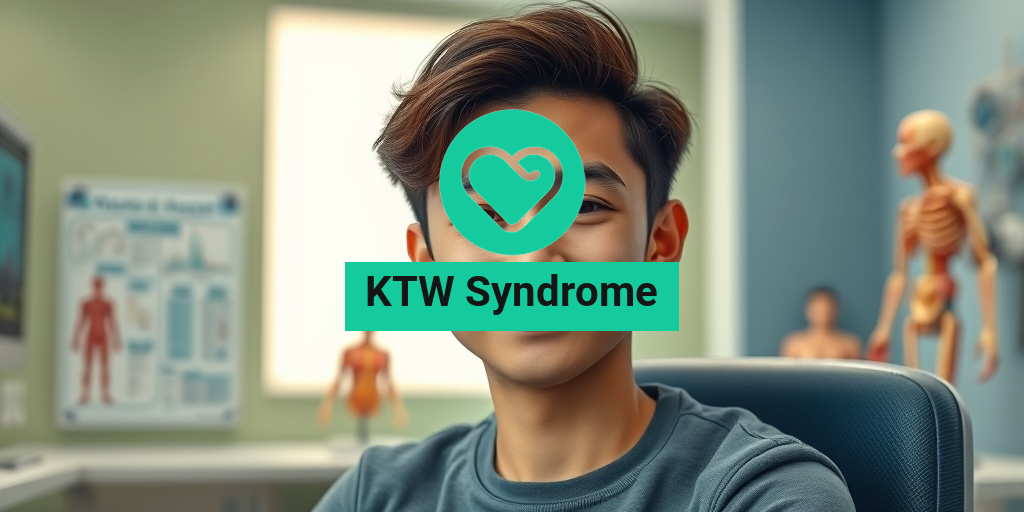What Is Primary Cutaneous Amyloidosis?
Primary Cutaneous Amyloidosis is a rare skin disorder characterized by the deposition of amyloid proteins in the skin. These proteins are abnormal and can accumulate in various tissues, leading to a range of symptoms. Unlike systemic amyloidosis, which affects multiple organs, primary cutaneous amyloidosis is localized to the skin. This condition is often seen in adults and can manifest in different forms, including primary localized cutaneous amyloidosis and primary cutaneous lichen amyloidosis.
Understanding Amyloidosis
Amyloidosis refers to a group of diseases that result from the buildup of amyloid, a protein that can misfold and aggregate in tissues. In the case of primary cutaneous amyloidosis, the amyloid deposits are primarily found in the skin, leading to various dermatological symptoms. The exact cause of this condition remains unclear, but it is believed to be related to genetic factors and environmental triggers.
Forms of Primary Cutaneous Amyloidosis
There are several forms of primary cutaneous amyloidosis, each with distinct characteristics:
- Primary Localized Cutaneous Amyloidosis: This form typically presents as raised, waxy lesions on the skin, often found on the trunk or extremities.
- Primary Cutaneous Lichen Amyloidosis: This variant is characterized by itchy, scaly patches that can resemble lichen planus, often affecting the lower legs.
- Primary Cutaneous Nodular Amyloidosis: This form presents as nodules that can be firm and may vary in color, often appearing on the scalp or face.
Understanding these forms is crucial for accurate diagnosis and treatment. If you suspect you have symptoms related to primary cutaneous amyloidosis, consulting a healthcare professional is essential for proper evaluation and management.
Symptoms of Primary Cutaneous Amyloidosis
The symptoms of primary cutaneous amyloidosis can vary depending on the specific form of the condition. However, some common symptoms include:
Common Symptoms
- Skin Lesions: The most noticeable symptom is the presence of skin lesions, which can appear as raised, waxy, or nodular formations.
- Itching: Many individuals experience itching or discomfort in the affected areas, particularly with lichen amyloidosis.
- Color Changes: The lesions may vary in color, ranging from skin-colored to reddish-brown or yellowish.
- Thickened Skin: Over time, the skin in the affected areas may become thickened or hardened.
Impact on Quality of Life
While primary cutaneous amyloidosis is not life-threatening, it can significantly impact an individual’s quality of life. The visible nature of skin lesions can lead to psychological distress, social withdrawal, and decreased self-esteem. It’s essential for those affected to seek support and treatment options to manage symptoms effectively.
When to Seek Medical Advice
If you notice any unusual skin changes or symptoms that resemble those of primary cutaneous amyloidosis, it is crucial to consult a healthcare provider. Early diagnosis and intervention can help manage symptoms and prevent complications. A dermatologist can perform a thorough examination and may recommend a skin biopsy to confirm the diagnosis.
For more information on primary cutaneous amyloidosis and other health-related topics, consider visiting Yesil Health AI, a valuable resource for evidence-based health answers.
In conclusion, understanding primary cutaneous amyloidosis is vital for those affected by this condition. By recognizing the symptoms and seeking appropriate medical advice, individuals can take proactive steps towards managing their health and improving their quality of life. 🌟

Causes and Risk Factors
Understanding the causes and risk factors associated with Primary Cutaneous Amyloidosis is crucial for early detection and management. This rare skin condition is characterized by the deposition of amyloid proteins in the skin, leading to various symptoms, including itchy, raised lesions. Let’s delve into the factors that contribute to this condition.
Genetic Predisposition
One of the significant factors influencing the development of Primary Cutaneous Amyloidosis is genetic predisposition. Individuals with a family history of amyloidosis or related conditions may have a higher risk of developing this skin disorder. Genetic mutations can affect the way proteins are processed in the body, leading to amyloid accumulation.
Chronic Skin Conditions
Chronic skin conditions, such as eczema or psoriasis, can increase the risk of developing Primary Cutaneous Amyloidosis. The persistent inflammation and skin damage associated with these conditions may trigger amyloid protein deposition. Therefore, individuals with a history of chronic skin issues should be vigilant about any new or unusual skin changes.
Age and Gender
Age and gender also play a role in the risk factors for Primary Cutaneous Amyloidosis. This condition is more commonly diagnosed in middle-aged individuals, particularly those between the ages of 40 and 60. Additionally, studies suggest that women may be more susceptible to this condition than men, although the reasons for this disparity are not entirely understood.
Environmental Factors
Environmental factors, including exposure to certain chemicals or irritants, may contribute to the development of Primary Cutaneous Amyloidosis. Prolonged exposure to substances that irritate the skin can lead to chronic inflammation, which may, in turn, promote amyloid deposition. It’s essential to be aware of your environment and take precautions to minimize exposure to potential irritants.
Immune System Disorders
Individuals with compromised immune systems or autoimmune disorders may also be at an increased risk for Primary Cutaneous Amyloidosis. Conditions that affect the immune response can lead to chronic inflammation, creating an environment conducive to amyloid accumulation. Regular check-ups and monitoring are vital for those with such health issues.
Diagnosis of Primary Cutaneous Amyloidosis
Diagnosing Primary Cutaneous Amyloidosis can be challenging due to its similarity to other skin conditions. However, a thorough evaluation by a healthcare professional can lead to an accurate diagnosis. Here’s how the diagnosis process typically unfolds:
Clinical Examination
The first step in diagnosing Primary Cutaneous Amyloidosis involves a detailed clinical examination. A dermatologist will assess the skin lesions, noting their appearance, location, and any associated symptoms, such as itching or discomfort. The characteristic appearance of the lesions can provide valuable clues for diagnosis.
Skin Biopsy
A definitive diagnosis often requires a skin biopsy. During this procedure, a small sample of the affected skin is removed and examined under a microscope. The presence of amyloid deposits can be confirmed through special staining techniques, which highlight the amyloid proteins. This step is crucial for distinguishing Primary Cutaneous Amyloidosis from other skin disorders.
Additional Tests
In some cases, additional tests may be necessary to rule out systemic amyloidosis or other underlying conditions. Blood tests, urine tests, and imaging studies may be conducted to assess organ function and determine if amyloid deposits are present elsewhere in the body. These tests help ensure a comprehensive understanding of the patient’s health status.
Patient History
A thorough patient history is also essential in the diagnostic process. The healthcare provider will inquire about any previous skin conditions, family history of amyloidosis, and any symptoms experienced by the patient. This information can provide context and assist in making an accurate diagnosis.
In conclusion, understanding the causes and risk factors of Primary Cutaneous Amyloidosis is vital for early detection and management. If you notice any unusual skin changes or have concerns about your skin health, consult a healthcare professional for a comprehensive evaluation. 🩺✨

Treatment Options Available
When it comes to managing Primary Cutaneous Amyloidosis, understanding the available treatment options is crucial for patients seeking relief from symptoms and improved quality of life. This condition, characterized by the deposition of amyloid proteins in the skin, can lead to various symptoms, including itching, rashes, and skin lesions. Here, we explore the most common treatment modalities.
Topical Treatments
Topical therapies are often the first line of treatment for Primary Cutaneous Amyloidosis. These treatments aim to alleviate symptoms and reduce the appearance of skin lesions. Some effective topical options include:
- Corticosteroids: These anti-inflammatory medications can help reduce itching and inflammation associated with the condition.
- Calcineurin Inhibitors: Medications like tacrolimus and pimecrolimus can be effective in managing localized symptoms without the side effects of long-term steroid use.
- Retinoids: Topical retinoids may promote skin cell turnover and improve the appearance of amyloid deposits.
Systemic Treatments
For more severe cases or when topical treatments are insufficient, systemic therapies may be considered. These treatments work throughout the body and can include:
- Immunosuppressants: Medications such as methotrexate or azathioprine can help control the immune response and reduce amyloid production.
- Biologic Therapies: Newer biologic agents targeting specific pathways in the immune system may offer hope for patients with refractory symptoms.
- Plasmapheresis: This procedure involves filtering the blood to remove amyloid proteins and may be beneficial in certain cases.
Phototherapy
Phototherapy, or light therapy, is another treatment option that has shown promise for patients with Primary Cutaneous Amyloidosis. This method involves exposing the skin to ultraviolet (UV) light, which can help reduce inflammation and improve skin lesions. Narrowband UVB therapy is particularly effective and is often well-tolerated by patients.
Emerging Treatments
Research is ongoing to find more effective treatments for Primary Cutaneous Amyloidosis. Clinical trials are exploring novel therapies, including:
- Gene Therapy: Targeting the genetic basis of amyloid production may offer a future avenue for treatment.
- Small Molecule Inhibitors: These agents aim to disrupt the formation of amyloid proteins at a molecular level.
Home Care Strategies
In addition to medical treatments, implementing effective home care strategies can significantly enhance the management of Primary Cutaneous Amyloidosis. These strategies focus on symptom relief and improving overall skin health.
Skin Care Routine
Establishing a gentle skin care routine is essential for individuals with Primary Cutaneous Amyloidosis. Here are some tips:
- Moisturize Regularly: Use fragrance-free moisturizers to keep the skin hydrated and reduce itching.
- Avoid Irritants: Steer clear of harsh soaps, detergents, and skincare products that can exacerbate symptoms.
- Sun Protection: Apply broad-spectrum sunscreen daily to protect sensitive skin from UV damage.
Diet and Nutrition
A balanced diet can play a role in managing symptoms. Consider incorporating:
- Anti-inflammatory Foods: Foods rich in omega-3 fatty acids, such as fish, walnuts, and flaxseeds, may help reduce inflammation.
- Hydration: Staying well-hydrated supports skin health and overall well-being.
Stress Management
Stress can exacerbate skin conditions, including Primary Cutaneous Amyloidosis. Implementing stress management techniques can be beneficial:
- Meditation and Mindfulness: Practices that promote relaxation can help reduce stress levels.
- Regular Exercise: Engaging in physical activity can improve mood and overall health.
Regular Follow-ups
Finally, maintaining regular follow-ups with a healthcare provider is crucial for monitoring the condition and adjusting treatment plans as necessary. Open communication about symptoms and treatment efficacy can lead to better management of Primary Cutaneous Amyloidosis.

Living with Primary Cutaneous Amyloidosis
Living with Primary Cutaneous Amyloidosis can be a unique challenge for many individuals. This rare skin condition is characterized by the deposition of amyloid proteins in the skin, leading to various symptoms that can significantly impact daily life. Understanding the condition, its symptoms, and management strategies is crucial for those affected.
Understanding Primary Cutaneous Amyloidosis
Primary Cutaneous Amyloidosis is a localized form of amyloidosis that primarily affects the skin. It is not associated with systemic amyloidosis, which affects multiple organs. The condition can manifest in different forms, including:
- Primary Localized Cutaneous Amyloidosis: This is the most common form, often presenting as plaques or nodules on the skin.
- Primary Cutaneous Lichen Amyloidosis: This variant typically appears as itchy, scaly patches, often on the lower legs.
- Primary Cutaneous Nodular Amyloidosis: Characterized by firm, raised nodules that can occur anywhere on the body.
Symptoms and Diagnosis
The symptoms of Primary Cutaneous Amyloidosis can vary widely among individuals. Common symptoms include:
- Itching: Many patients experience intense itching, which can be distressing and lead to scratching.
- Skin Changes: The skin may develop thickened patches, nodules, or plaques that can vary in color from skin-toned to brownish.
- Discomfort: Some individuals may feel discomfort or pain in the affected areas.
Diagnosis typically involves a thorough clinical examination and may include a skin biopsy to confirm the presence of amyloid deposits. If you notice any unusual skin changes, it’s essential to consult a healthcare professional for an accurate diagnosis.
Management Strategies
While there is no cure for Primary Cutaneous Amyloidosis, several management strategies can help alleviate symptoms and improve quality of life:
- Topical Treatments: Corticosteroids and other topical medications can help reduce inflammation and itching.
- Phototherapy: Light therapy may be beneficial for some patients, particularly those with lichen amyloidosis.
- Supportive Care: Moisturizers and antihistamines can help manage symptoms and improve skin comfort.
It’s important to work closely with a dermatologist who understands this condition to develop a personalized treatment plan. Regular follow-ups can help monitor the condition and adjust treatments as necessary.
Outlook and Prognosis
The outlook for individuals with Primary Cutaneous Amyloidosis is generally positive, especially when the condition is localized and not associated with systemic disease. Here are some key points regarding prognosis:
Long-Term Management
While Primary Cutaneous Amyloidosis is not life-threatening, it can be a chronic condition requiring ongoing management. Many patients find that with appropriate treatment, they can effectively control symptoms and maintain a good quality of life. Regular monitoring is essential to ensure that the condition does not progress.
Potential Complications
In some cases, individuals may experience complications such as:
- Secondary Infections: Scratching and skin damage can lead to infections.
- Psychological Impact: The visible nature of skin lesions can affect self-esteem and mental health.
Addressing these complications early through medical intervention and support can significantly improve outcomes.
Living with Confidence
Many individuals with Primary Cutaneous Amyloidosis find ways to adapt and live fulfilling lives. Support groups and online communities can provide valuable resources and emotional support. Sharing experiences with others facing similar challenges can foster a sense of belonging and understanding. 🌟
In conclusion, while Primary Cutaneous Amyloidosis presents unique challenges, effective management strategies and a supportive network can help individuals navigate their journey with confidence and resilience. 💪

Frequently Asked Questions about Primary Cutaneous Amyloidosis
What is Primary Cutaneous Amyloidosis?
Primary Cutaneous Amyloidosis is a rare skin condition characterized by the deposition of amyloid proteins in the skin. This condition can lead to various symptoms, including itching and the formation of lesions. It primarily affects the skin without involvement of other organs.
What are the symptoms of Primary Cutaneous Amyloidosis?
The symptoms of Primary Cutaneous Amyloidosis can vary but commonly include:
- Itching or pruritus
- Skin lesions that may appear as plaques or nodules
- Discoloration of the skin
- Thickened skin in affected areas
How is Primary Cutaneous Amyloidosis diagnosed?
Diagnosis typically involves a combination of clinical examination and skin biopsy. A biopsy can confirm the presence of amyloid deposits in the skin, which is essential for a definitive diagnosis of Primary Cutaneous Amyloidosis.
What are the treatment options for Primary Cutaneous Amyloidosis?
Treatment for Primary Cutaneous Amyloidosis focuses on alleviating symptoms and may include:
- Topical corticosteroids to reduce inflammation and itching
- Antihistamines for itching relief
- Phototherapy to improve skin appearance
- Systemic treatments in severe cases
Can Primary Cutaneous Amyloidosis affect other parts of the body?
While Primary Cutaneous Amyloidosis primarily affects the skin, it is important to monitor for any signs of systemic involvement. In most cases, it remains localized to the skin, but consultation with a healthcare provider is recommended for comprehensive evaluation.
Is Primary Cutaneous Amyloidosis hereditary?
There is currently no strong evidence to suggest that Primary Cutaneous Amyloidosis is hereditary. However, some cases may occur in families, indicating a potential genetic predisposition. Further research is needed to understand the underlying causes.
What is the prognosis for someone with Primary Cutaneous Amyloidosis?
The prognosis for individuals with Primary Cutaneous Amyloidosis is generally good, especially when the condition is localized to the skin. With appropriate management, symptoms can often be controlled, and the quality of life can be maintained.
Where can I find more information about Primary Cutaneous Amyloidosis?
For more detailed information, consider consulting reputable medical websites, dermatology resources, or speaking with a healthcare professional who specializes in skin disorders. Online support groups and forums can also provide valuable insights and shared experiences from others affected by Primary Cutaneous Amyloidosis.




